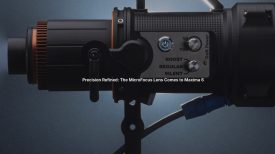
Remember when video cameras were not capable of producing photos that looked as good as stills cameras? Well it looks like those days are now behind us.
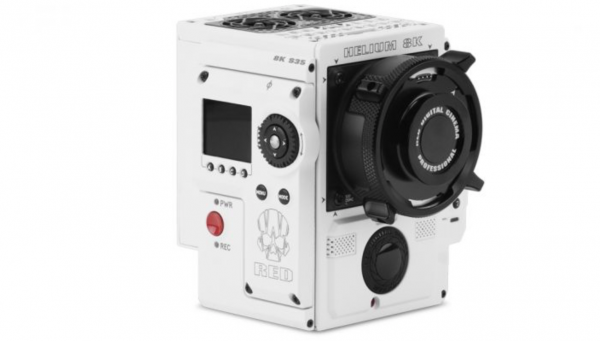
DxO Labs has announced that RED’s new HELIUM sensor has recorded an unprecedented 108 point DXOMark sensor score, which incidentally tops the only other sensor to have broken the 100 barrier – RED’s own Epic Dragon prototype (101 points). DxOMark sensor scores are determined by a panel of imaging experts who use a systematic testing process to measure the ISO sensitivity, noise and color sensitivity of each camera’s RAW sensor performance for stills photography.
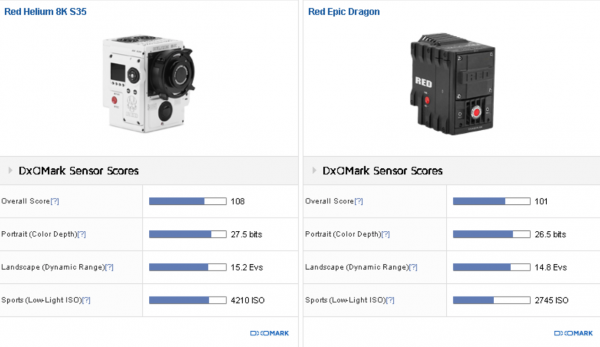
As with the Dragon, the score is not included in DxO Labs official ranking, as it was based on a prototype unit (which allows saving images as RAW), but it does give a good indication of the device’s capabilities. It is also important to note that DxO Labs has never tested either the Sony F65 or Arri Alexa 65, so it really is difficult to quantify just where the RED Helium 8K sits in regards to other high end digital cinema cameras.
RED’s Helium sensor and can capture 8K video at up to 75 fps (60 fps with RAW high resolution format). The less-expensive Epic W also incorporates the new sensor, and can capture 8K video at up to 30 fps. Since the Helium sensor is physically similar to the Dragon’s 30mm x 16mm size (similar to APS-H in DSLR terms), its pixels are packed more densely (around 3.65 microns each). DxO Labs were very impressed that the Helium sensor surpassed the dynamic range, color depth, low-light ISO, and noise ratings of the Dragon’s 6K sensor.
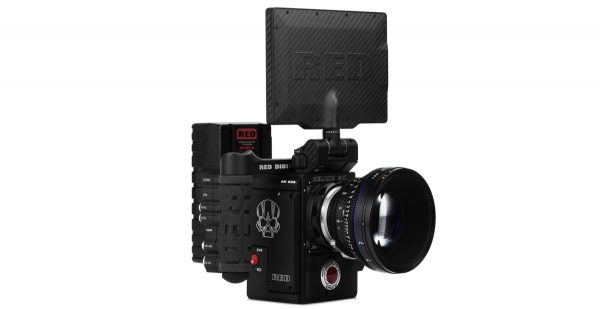
RED claims both cameras are capable of producing 16.5+ stops of dynamic range, but DxO Labs measured them at 15.2 stops. This figure is still higher than any other APS-H sensor they have tested, and it is higher than any other full-frame sensors in their database.
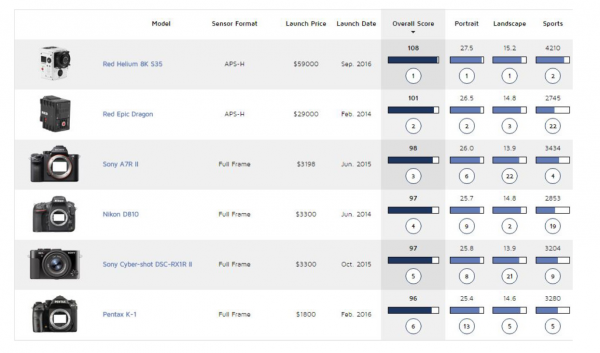
Image: DxO Labs
DxO Labs said that the RED cameras’ image quality managed to outperform full-frame DSLRs in several areas – despite having sensors that are only about two-thirds the size. While this is none the less impressive, it is important to note that they do cost considerably more than cameras such as the Sony a7RII that recorded an over all score of 98.
The Helium also posted a record-setting score in the Colour Depth category, measuring nearly 27 bits, higher than any of the full-frame DSLRs they have previously tested.
When it comes to low light performance the older RED Dragon sensor suffered in their low-light tests, finishing behind the Sony A7R II and Nikon D810. The Helium has registered a significant improvement in this department, jumping from 2745 to 4210. DxO Labs expects that this is more than likely the result of improved sensor design as well as temporal noise reduction. They are however quick to point out that whatever noise reduction system RED employs creating the RAW images from the Helium sensor, its presence means that you aren’t measuring just the RED sensor, so its results aren’t directly comparable to those from camera sensors they have tested from other vendors, whose RAW results come straight from the sensor with no prior noise reduction processing.
RED have certainly made some vast improvements with their latest sensors and the DxO scores and testing show just how much they have improved. For the full evaluation head over to DxO Labs.
Of course there are plenty of practical reasons why you might still choose a dedicated stills camera instead of a RED for your photos. Apart from cost there are also things like size, autofocus and overall handling that make a good stills camera a more practical solution for most photographers. But if you have deep pockets and are prepared to configure your RED as a stills camera, set your shutter speeds accordingly and live with the handling issues, then you should be rewarded with excellent imagery.



